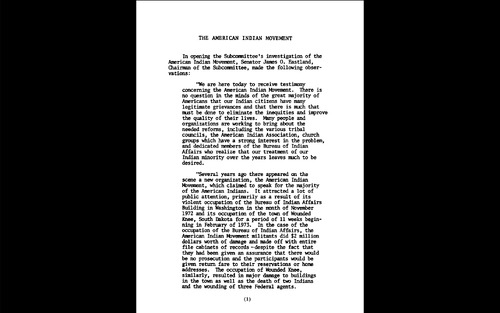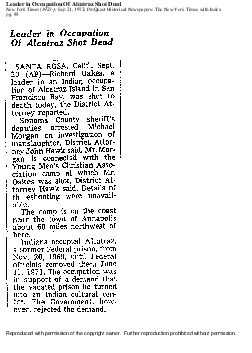After Alcatraz: Government Reaction and Richard Oakes
Unfortunately, the alcatraz occupation had unforeseen consequences for some of those who participated in the civil movment. Richard Oakes, de facto leader of the Alcatraz Occupation of 1969-1971 was fatally shot a few years after the protest came to an end, and while it is presumed that his assassination is unrelated to the great social justice movement he was trying to bring forth in the years prior seems to bee too much of a coincidence. Oakes and the other members of IAT were striving to make a peaceful attempt for native civil equality and their joint efforts were ultimately influential but in and of themselves ineffective. The government responded with a series of defamatory conclusions about the IAT: that they were a terrorist organization, inleague with the Black Panthers and the IRA, harboring criminals and stockpiling arms and ammunition. These were all for the most part untrue, and worked against the overall message of Native inclusion in the Civil Rights Movement.
Click Here to watch a collection of videos from Alcatraz throughout the occupation.
To fully understand the past research on the Alcatraz movement we need to understand how it was perceived during the time, the short series of clips from the video linked above depict Alcatraz as a somewhat disorganized and shambled together movement, but history has not supported this claim. More recent research on the movement has shown that the IAT was a fairly capable and organized group especially compared to many of the other protest groups which arose in the 1960s and 70s, and certainly one of the most successful occupations of government property in the history of American social justice. Modern history praises the efforts of the IAT, but fails to recognize the shortcomings of the movement, lack of a realistic goal, inability to cooperate with loacl authorities and their reluctance to take a compensatory sum to vacate Alcatraz all contributed to the IAT's ultimate failure and the dissolution of the movement. Unfortunately, even in the years directly following the death of Richarch Oakes, little was done to commemorate him or his movement, a sentiment which sourly continues to this day (besides reference in the Alcatraz museum itself). A sorry reminder of the power of the government to silence minority voices.

